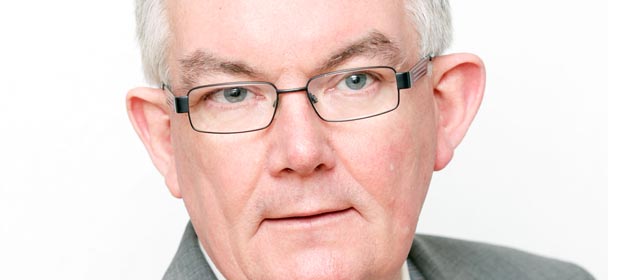Health service managers will be heartened that Dr. Ambrose McLoughlin, the new Secretary General of the Department of Health is committed to the professional training and development of managers.
Unusually for the Department of Health, Dr. McLoughlin has not come up through the ranks of the civil service, but he has an impressive pedigree. He is widely experienced having spent 30 years working in the health service. A dentist by profession, he is a former CEO of the North Eastern Health Board and before his appointment as Secretary General of the Department of Health was Registrar and CEO of the Pharmaceutical Society of Ireland, the statutory body for the regulation of pharmacists.

He has a particular interest in health professional regulation and patient safety and wants to accelerate the pace of structural reform of the health services.
In a letter to HSE Chief Executive, Mr. Cathal Magee, dated May 2, just nine days following his appointment, he said that in his preliminary discussions with the Minister for Health, Dr. James Reilly, it had become clear that “we are going to have to accelerate the pace of structural reform in order to meet the challenging deadlines of the administration and the financial challenges facing the health system.”
He said we would need to undertake a systematic and comprehensive exercise to review staffing levels, leadership arrangements and governance implications of reorganising all the available resources, within both the Department of Health and the HSE, related to the following functions – ICT, business information analysis, communications and procurement.
He said it was clear to him that we needed to achieve three things with some urgency over these core national strategic functions:
- Integration – It was imperative that we introduced unified leadership over core functions in order to ensure all available resources were directed towards the goals of the reform programme.
- Consolidation – In order to best achieve the results we needed to begin the process of redesigning our common technology platforms, job roles and team structures to set ourselves up for the task of transition between now and the end of 2015. This could only happen if we eliminated duplication and reallocated teams into new formal management arrangements.
- Alignment – All of the resources available to the national strategic management of the health and social care system needed to be able to work together in pursuit of single missions. As we undertook this work, we would need to consider how best to align functions to ensure they were both developed appropriately during the transitional phase, were designed in a way that produced coherence across the reform programme and finally were capable of being finally located in the new reformed structures that we intended to be statutorily established through 2014 and 2015.
- Dr. McLoughlin concluded his letter to Mr. Magee by stating that “because of the urgency I spoke about at the outset of this letter, I would appreciate your full co-operation in a review to be initiated immediately and the outcomes of which I would like to have delivered to me by 26th May. I have asked Mr. Tony O’Brien to lead on this process on my behalf and would value the opportunity to discuss with you at your earliest convenience who we should work through in the HSE”

